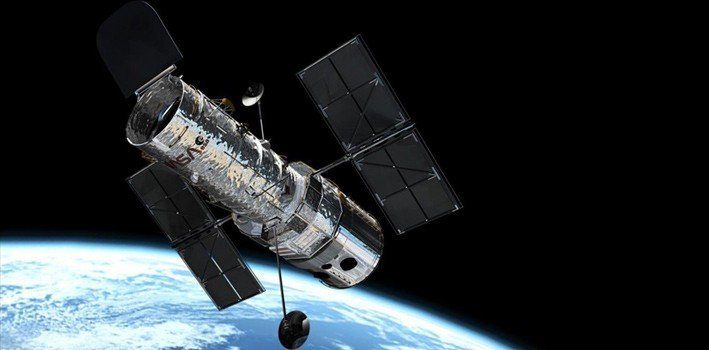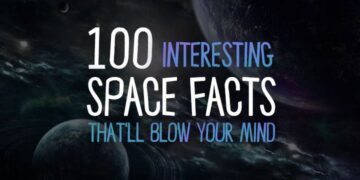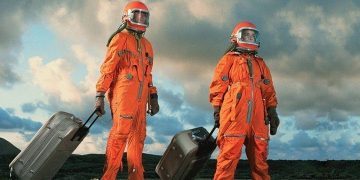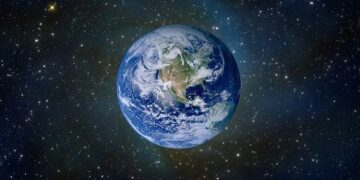The Hubble Space Telescope, or HST, has been at the forefront of space discovery from dating the universe to identifying distant and almost invisible planets and solar systems.
The telescope has been responsible for so many ideas about extra-terrestrial life through the finding of new phenomena and objects.
Tracy K. Smith summarized the feelings so many have about the telescope:
“I don’t know how anyone can see the Hubble ‘Deep Field’ image and not feel like something else is going about its business out there”.
Here we’re going to look at 14 facts about this circling beacon of discovery.
As of spring 2011, Hubble had traveled around the globe over 115,000 trips. This equates to around 5 billion km (over 3.1 billion miles) or the length of a trip to Neptune.
The Hubble Space Telescope is extremely accurate, it’s able to lock onto a target without moving over 7/1000th of an arcsecond (1° is split into 60 arcminutes and each arcminute into 60 arcseconds) or less scientifically, the width of a human hair seen 1 mile away.
The HST weighs 11 tonnes and measures 13.2m long, which can be as heavy as 11 polar bears and is just under the length of 3 and a half Mini Coopers.
The HST can observe the most distant galaxies ever seen but there are a couple of nearby objects it can’t even look at, they include the Sun (so bright it would damage its sensors) and Mercury due to how close it is to the Sun itself.
Hubble is really just an expensive intricate giant digital camera, its instruments capture the Universe’s light with electronic detectors.
The HST uses little power compared to its size and purpose, using about 2800 watts, which’s only 1300 more than a hair dryer on high heat, which uses 1500 watts. The telescope powers itself via solar panels measuring 2.6 x 7.1 m.
Hubble’s images that are sent back are in black and white. The color images are made by combining two or more black and white exposures through colored filters during image processing.
The Hubble program’s launch was delayed in 1986 after the Challenger space shuttle crashed halting all following launches. Scientists used this time to refine and improve the telescope until its launch in 1990 but it went more than $1 billion over budget.
In 1990 when the first images were received they revealed that the main focusing mirror was polished incorrectly, less than 1/50th of the thickness of a sheet of paper but it still caused images to be blurry. The so-called “$1.5 Billion Blunder” was corrected in 1993 by a group of astronauts installing a tiny mirrored device called CORSTAR.
Hubble is quite the speedy telescope, it goes around the world 11 times faster than a Eurofighter Typhoon’s max altitude speed (2495km/h), rushing past at 28 000 km/h.
Hubble has revealed the universe to be about 13 to 14 billion years old which was much more accurate compared to the old range of 10 to 20 billion years. It was also vital in the discovery of dark energy, a force linked to the speed of the Universe’s expansion.
The Hubble has captured some of the most extraordinary sites, none less than the image used for its 26th birthday; a mammoth bubble being blown into space by a super-hot, massive star. The image of the Bubble Nebula, or NGC 7635, was chosen to commemorate the launch by the STS-31 space shuttle crew on April 24, 1990.
Edwin Powell Hubble, a very important astronomer and the man the HST is named after, initially studied law at Oxford and practiced it for a year after promising his dying father, even though he already had a degree in Mathematics and Astronomy.
Hubble has snapped images of exoplanets, a planet that orbits a star outside the solar system, which isn’t easy as the planets are faint and very close to bright stars. HR 8799 and Fomalhaut b are the first of these images taken in 2008 by the Keck and Gemini observatories and the HST. To see these exoplanets a high-contrast camera or coronagraph is used to block the light from the central star and let us see the planet orbiting it.
The telescope is nothing more than proof of man’s strive to learn about space, to delve into each and every corner of the vast dark abyss, and each time we discover something new it propels us forward to seek out the next magnificent and awe-inspiring object.
Even with its initial failure, its soaring costs, and equipment misalignments, it’s justified every bit of negativity thrown its way with the images and information it’s given us.
As with every space-related object, creation, or phenomenon, there is so much more to learn and I urge you to do so.
The Webb telescope is the next space telescope to be launched and with heightened sensors, who knows what it will discover…

















